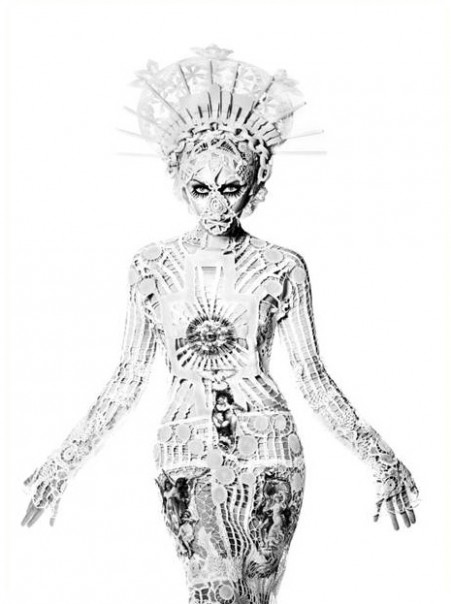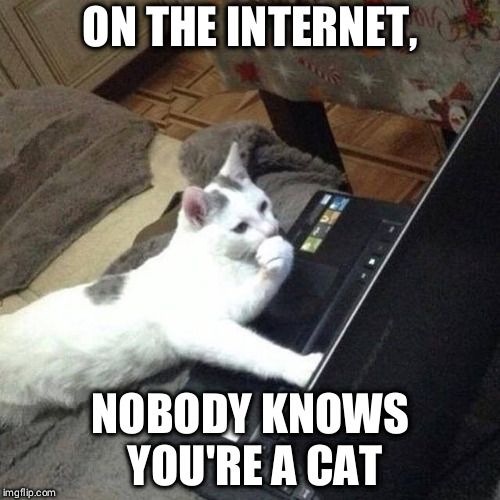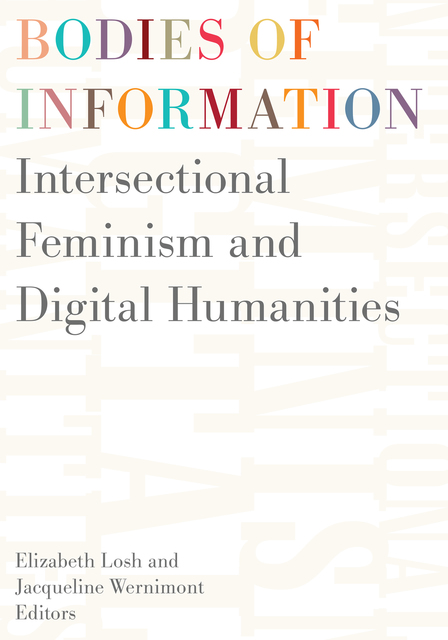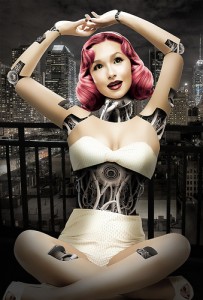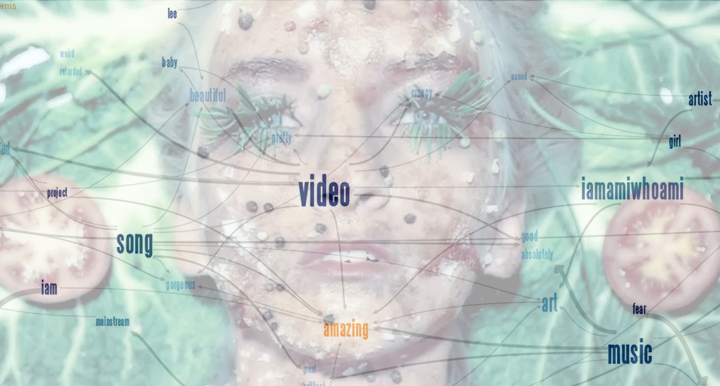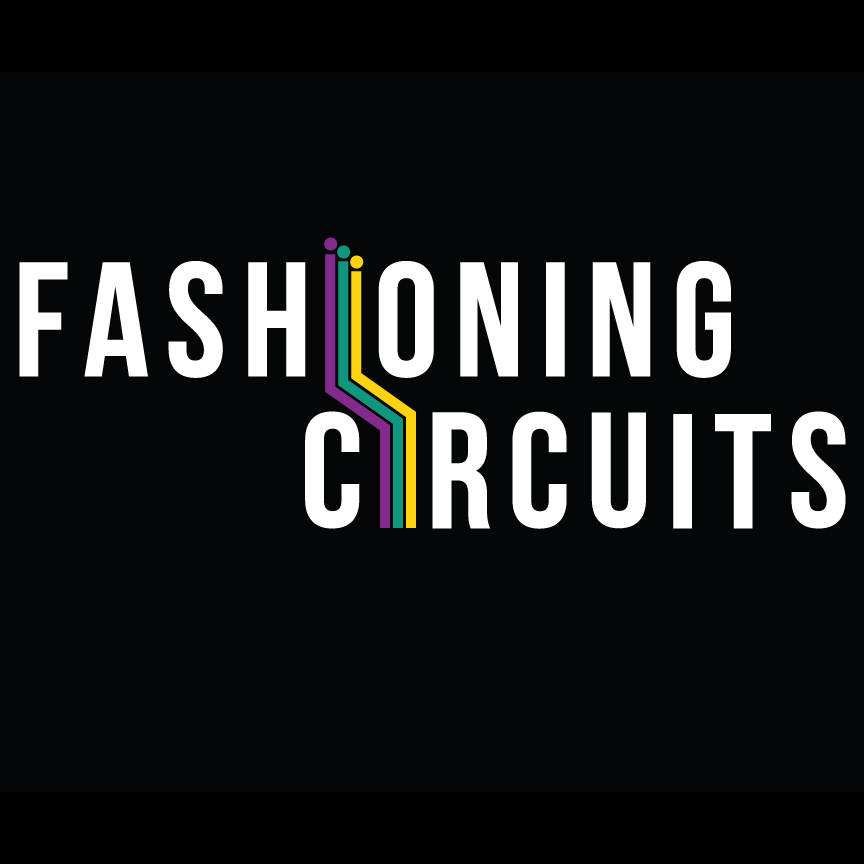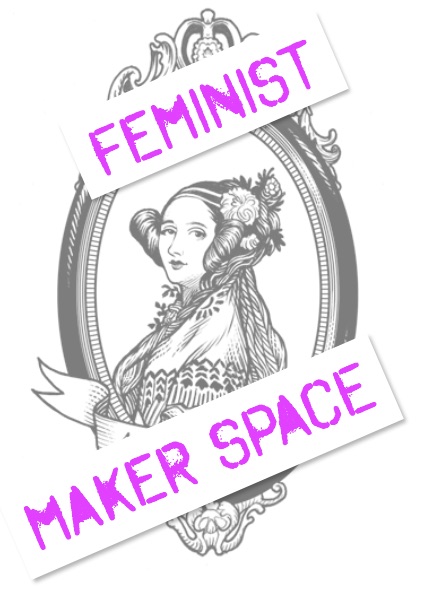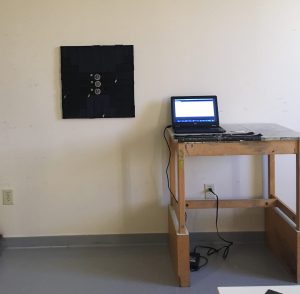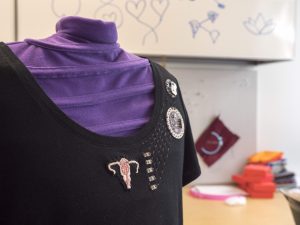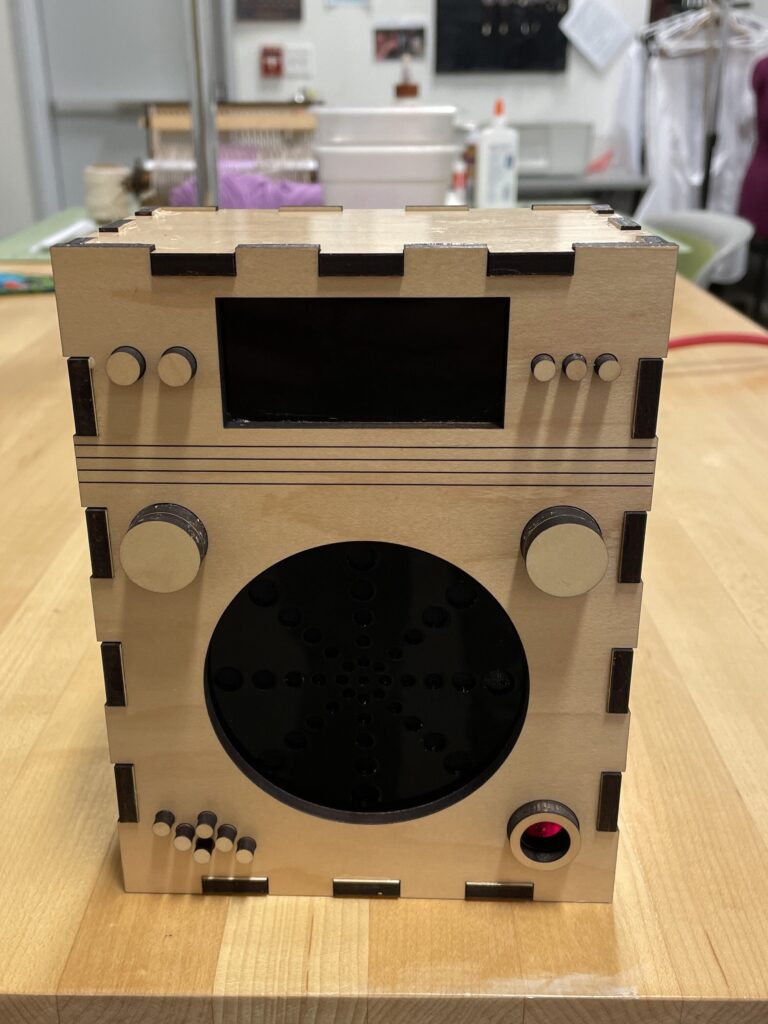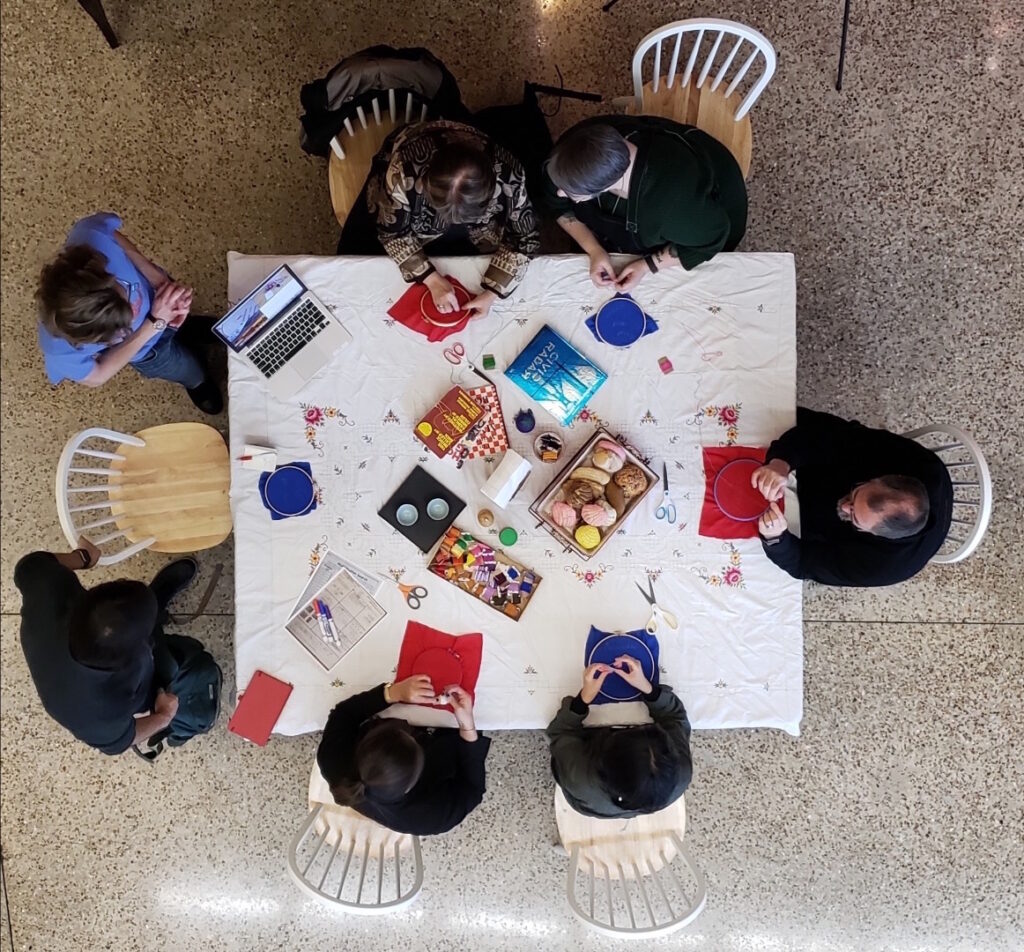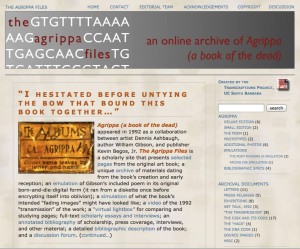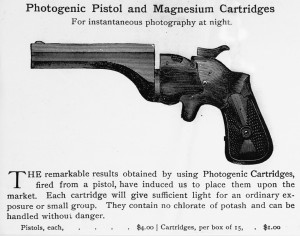Research and Practice Highlights
Scholarly Profile
I am a digital media scholar whose research draws upon the fields of media, literary, cultural, and film studies. My research and teaching focus on the interplay of power structures and identity in digital culture, with particular emphasis on the role of gender and intersectional feminism (Crenshaw 1989) in networked environments. The objects that I study range from the operational objects of digital culture, such as websites, applications, and tech culture generally, to the representations of digital culture in film, literature, and art. The outlets for my scholarship can be found across a continuum from specialized to public: from publishing in academic fora to bringing theory into practice in partnerships with community organizations. My research methods also exist along a continuum: I move fluidly between theory and practice. I work in traditional modes of scholarship such as the publication of books, chapters, and journal articles. Added to this are my practices of publicly engaged humanities work, as well as “critical making.” Critical making is “materially productive, hands-on work intended to uncover and explore conceptual uncertainties, parse the world in ways that language cannot, and disseminate the results of these explorations through embodied, material forms” (Ratto 2014). My research methods often navigate the spaces between binaries such as theory/practice, academic/public, individual/collaborative, allowing the research question to guide my approach.
Below you will find highlights of my research and critical making work. For a full list of knowledge production and dissemination, see my C.V.
Fashioning Makers and Counterpublics Book Project
Overview of Fashioning Makers and Counterpublics: Critical Making and Public Humanities
Under review with University of Iowa Press for the Humanities and Public Life series.
In Spring 2011, the Dallas Museum of Art announced an upcoming exhibit on the clothing of Jean Paul Gaultier, which would open the following Fall. The exhibit had only one other U.S. location scheduled – San Francisco. Given the sparse touring schedule, this was a unique opportunity to involve students in the program in Emerging Media and Communication at UT Dallas with an event in the local arts community. The first node of connection originated in an image of a Gaultier dress that was designed for Kylie Minogue (below).
The crochet elements of the dress are reminiscent of the traces on a circuit board and prompted the basic idea for Fashioning Circuits. The project originally took the form of an independent study on fashion and media with topics of study such as embodiment, gender identity, and the historical relationship between fashion and media. The original group of participants, one professor and four graduate students, read and discussed theories of fashion, technology, identity, and globalization. They blogged annotated bibliography entries and critical analysis of wearable media. Perhaps most unusual for a Humanities context, they used sewing machines, soldering irons, and microcontrollers to create wearable media objects.
It quickly became evident that the most significant potential of Fashioning Circuits was not in the connection to the local arts community but in the way it challenged students to engage in sewing, electronics, and coding as new forms of scholarly production. Students with little to no experience in this area became empowered in new modes of expressing ideas. The project in its current iteration still contains all of those original elements (blogging, criticism and making) but now also includes multiple ways of operating beyond the bounds of the traditional classroom. These are workshops with community partners to introduce young women to coding and making in a Humanities context, Creative Labs that are open to the campus community, and the ongoing work on the blog. Through all of these activities, Fashioning Circuits attempts to empower students as makers, which in turn contributes to counterpublic formation.
The book Fashioning Makers and Counterpublics: Critical Making and Public Humanities explores the theoretical foundations of the project and shares detailed information on its genesis and operations, including perspectives from project partners and the successes and challenges of this kind of scholarly activity. Chapters include theoretical foundations (including the ways in which it contributes to counterpublic formation and its status as a humanist project interfacing with issues in STEM fields), a detailed project narrative, perspectives on university coursework, perspectives on community engagement, the project’s impact on educational technology (authored by Laura Pasquini), future directions and the wider context of the project. A companion website will include tutorials, teaching materials, a workshop planning toolkit, a bibliography, links to suppliers, and other resources.
Publications
In Hyperrhiz: New Media Cultures
Special Issue of Hyperrhiz: New Media Cultures on Buzzademia: Scholarship in the Internet Vernacular. Co-edited with Anne Cong-Huyen and Mark Marino
Excerpt from the editors’ Introduction:
“At its heart, Buzzademia is about expressing and critiquing complex ideas in emergent forms. It takes everyone’s favorite learning outcome, critical thinking, and asks participants to practice it within a set of creative constraints. The forms are generally succinct and often require visual literacy and humor.
In fact, a number of these forms are tinged with the kind of low-grade or bold-faced sarcasm that has, for better or worse, colored the Internet. Because of this sarcasm and because of the humor and self-parodying banality of many of these forms, they are often held in low regard. Perhaps it is also due to their popular use or because of the sense that they are primarily the purview of those trying to avoid work. However, satire and parody are long-standing forms of rhetorical communication. At the bottom of the Buzzademic listicle is a reminder not to take ourselves too seriously as academics, nor to bury our ideas in esoteric language within unreadable essays hidden behind paywalls.”
http://hyperrhiz.io/hyperrhiz21/
In Bodies of Information: Intersectional Feminist Digital Humanities
“‘Danger, Jane Roe!’ Wearable Data Visualization as Feminist Praxis.”
The opening essay in the collection Bodies of Information, “Danger, Jane Roe! Wearable Data Visualization as Feminist Praxis” uses the lens of wearable and material data visualization to reflect on the responsibility of Digital Humanities practitioners to “do science better.” The essay begins with an examination of my project “Danger, Jane Roe,” and moves through examination of other data visualizations that take analog, material form. Ultimately I argue that “our status as outsiders, as scientific amateurs, as digital humanists, allows us the flexibility to occasionally engage in the antienvironmental; to détourn the tenets of scientific validity and use them against themselves to achieve awareness of the subjectivity and question the ground rules of objectivity and replicability, as well as their gendered associations. In short, to deploy feminist praxis to do science poorly.”
Bodies of Information: Intersectional Feminist Digital Humanities
In The Routledge Companion to New Media and Digital Humanities
In this invited and peer-reviewed essay, I argue that one must account for the materiality of the body in the wearable interface. The wearable interface is a process enacted within an assemblage of dress-body-technology, with the potential to construct a radical cyborg subject. However, the current most ubiquitous form of wearable technology, the fitness tracker, fails to fulfill the cyborg’s promise of kinship and affinity. Instead it facilitates the myth of self-reliant neoliberal subjectivity. I examine alternative landscapes in which wearables might contribute to counterpublic formation through arts and design, as well as feminist epistemologies and critical making in the university classroom.
“No description of this device would be complete without attention to the body that forms part of the wearable technology interface. The device marks the techno-body as one that is interested in health and/or understanding the self. But this assemblage is also shaped by the gender, race, class status, and relative fitness of the wearer. Consider, for instance, how the interface may morph on the body in relation to norms regarding which bodies are constructed as already “fit” vs. those that are othered in some way, via age, gender, race, or ability. The device interfaces with the body on which it is worn to inscribe a relationship to “fitness,” but the body also inscribes the device itself. Depending on the body now which it is situated, the tracker may be read as an effective management tool, laudable aspiration, or, in a negative reading, as a useless accessory. In other words, the device is affected by the bodily presence of the specific body on which it is worn. Because of the bodily presence of touch, the interface can never be actualized before the device is worn. Once the device is donned, the assemblage of dress-body-technology begins to enact the ongoing process of interface effect.”
In electronic book review
“Sublime Latency and Viral Premediation.”
This peer-reviewed article is an invited contribution for a special cluster of essays on the topic of “digital eco-poetics.” I examine antivirus software, crowdsourced health mobile applications, and an art installation centered on the late 1990s ILoveYou virus in order to illuminate the desires and fears of the viral.
“In contrast, antiviral technologies situate premediation as an “affective prophylactic” (Grusin 46). They deploy algorithmic actors in response to anxieties about the viral, whether it be digital or biological. As part of a viral structure, these technologies address anxiety anxiety with a claim to stop unauthorized reproduction. In fact, they reproduce themselves. The premediation of antivirus software ensures the need for expanded suites of security software and reinforces conservative habits of internet usage that produce legible data. The premediation of flu forecasting software capitalizes on two of the largest commodities in global capitalism: attention and data. The effect of which is a constant low level of anxiety that produces responsible citizens and remediates future affective states. In addition, both kinds of antiviral technology extend sociotechnical networks into the future, thereby ensuring the continued health of systems of capital and securitization.”
In The Projector
“The Work of iamamiwhoami in the Age of Networked Transmission”
In this peer-reviewed essay I blend methodologies, combining strategies of close reading and interpretation with computer-driven analysis of large collections of text, in order to show how participatory digital media enables a refiguring of Walter Benjamin’s concept of aura. The object of study here is the production, release strategies, and audience response to a series of music videos that were published anonymously online beginning in January 2010. The videos, now known to be the product of the Swedish music collective iamamiwhoami, inspired intense affective responses as music fans worked together to solve the mystery of their source. I argue that the videos function as part of a viral structure that produces auratic engagements that entrain subjects to alternative engagements with media.
Generative Spaces
Over the years I’ve come to realize that I am good at building spaces that nurture creativity and collaboration. It may seem unusual to list this on one’s CV but this is an important part of my research and critical making practice and I believe it is generative for others as well.
Fashioning Circuits
Fashioning Circuits is a public humanities project that I co-founded with graduate students in 2011 as an investigation into wearable media and technology. Wearables, and the shifts that arise from joining computing to the body, remain an important part of the work in the project. But our scope has expanded as we have done the work of exploring these questions and tracing these entanglements over the years. Fashioning Circuits is now a place where we also engage with the rich histories and practices of computational craft, domestic technologies, soft activism, and so forth. These practices, often hyper-feminized and located within homes or community collectives, are an important and often unacknowledged pre-history of what is today referred to as “maker culture.” We both study and engage in these practices in our scholarship, creative practice, and community partnerships
We are inspired by the possibilities of:
- Learning new techniques
- Recovering histories
- Working in collaboration in an inclusive space
- Developing strategies of expression that engage with broader cultural contexts
In Fashioning Circuits “fashion” functions not just as a noun to describe cultural trends, but also as a verb, “to fashion,” to indicate the experiential and problem based learning strategies of the project as well as the potential for a diverse range of students to fashion new histories and to fashion themselves as members of the publics and counterpublics of the future.
Feminist Maker Space
The Feminist Maker Space is committed to creating an inclusive creative space in which maker culture is situated in relation to a long and diverse history of craft and communal work. We are additionally committed to learning from the past and from one another. I founded the Feminist Maker Space in 2015 with a workshop on making Twitterbots. Since then we’ve offered over twenty workshops on soldering, arduino, conductive paint, papercraft, clothing repair, and more. Each workshop features a handout with tutorials, inspiration, materials, and other DIY resources, as well as an academic bibliography that puts the workshop topic in context. These are shared online in event recaps in order to be accessible to additional publics.
Mixed Media and Wearables
Black Ribbon for Mourning
Black Ribbon for Mourning (with Jessica C. Murphy and Dale MacDonald) draws connections between the contemporary epidemic of police killings that grows out of anti-black racism and the logics and economy of the 17th century slave trade. The project is installed as a 20×20 inch square, woven out of black ribbons. As participants approach the square, they are invited to remove a ribbon and tie it around their arm, leg, person. The ribbons have a vibrating motor sewn into them and are programmed to pulse, with each vibration representing a black person killed by police in 2016. Carrying the ribbon with them, the wearer experiences a faint vibration, timed at intervals that seem to belie no pattern. As more ribbons are removed from the tapestry, the names of those killed becomes visible, gesturing towards the possible world where it is no longer necessary to assert that black lives matter, which can only happen in the absence of black ribbon.
Danger, Jane Roe!
Danger, Jane Roe! is a research-oriented design project that uses a LilyPad Arduino, a micro-computer developed specifically for wearable applications. The LilyPad is sewn to a t-shirt, using conductive thread. It is accompanied by hand embroidered decorative elements and LEDs that light up in correlation to data related to Twitter activity around the topic of reproductive health. Danger, Jane Roe! signifies on its own as a design object, but it is also the subject of more traditional scholarly work. It forms the centerpiece of arguments I make for the collection Bodies of Information, in which I address the potential for feminist digital humanities to detourn scientific methods via play, provocation, and interrogation.
Interactive and Participatory Works
Handwashing Karaoke
In collaboration with Atanur Andic and Yeuh-Jung Lee.
In late February 2020, before the reality of the severity and virulence of COVID-19 set in, we conceptualized Handwashing Karaoke as a way to remind people to wash their hands for twenty seconds. The project of caring for our local communities seemed more important than ever. We thought that 20-second excerpts of popular karaoke songs, paired with the excellent acoustics of bathrooms, would be a way to bring a bit of levity to those anxious times. Before we could begin work in earnest on it, we found ourselves working from home and having to shift the way we collaborated. When in-person classes and meetings resumed in Fall 2021, we picked up this project again. Initially loaded with popular karaoke songs, we began switching out the playlists in honor of various events and history months.
Stitch n’ Glitch
In Fall 2018, Fashioning Circuits, Feminist MakerSpace, Studio for Mediating Play, and Social Practice and Community Engagement (SPaCE) Media, all research or creative collectives in the then School of Arts, Technology, and Emerging Communication (ATEC) at The University of Texas at Dallas, were asked to put together an installation or event to celebrate ATEC’s inaugural artist-in-residence, Lynn Hershman Leeson.
For the installation we used set dressing and props to produce two spaces, the kitchen and the studio. We created a 12-foot canvas with an image collage of stills and screenshots from feminist media art. Over the course of Leeson’s residency, participants were invited to join us at the kitchen table to learn to embroider. Then folks could move to the studio to embroider on the canvas. They could sew on fabric appliques in the shape of symbols of feminist empowerment, color with thread inside the images on the canvas, or embellish the canvas freestyle. The canvas was finished with the addition of a LilyPad Arduino MP3 player that plays “the future is feminist” in morse code whenever the button is pushed. The canvas was gifted to Leeson at the end of her residency.
I was the creative director and producer of this work.
Twitterbots
hooksbot
The hooksbot tweets the bell hooks quote, “We have to constantly critique imperialist white supremacist patriarchal culture because it is normalized by mass media and rendered unproblematic”, every time J.P. Morgan Chase’s stock rises 1%. I chose J.P. Morgan Chase’s stock as the trigger event because of their role in the 2008 financial crisis. The quote is from the book Homegrown: Engaged Cultural Criticism (2006) which consists of dialogues with Amalia Mesa-Bains.
With over 9,000 followers, the hooksbot regularly outshines her creator with 100s of retweets and 1000s of likes each time she tweets. On her biggest day, October 3, 2022, she had 674,000 impressions with 23,469 engagements, resulting from 3,000 retweets and over 12,000 likes. This speaks to the legacy of hooks’ work.
Design and Animation
“In the Beginning was the Word” Animation (with Bill Warner)
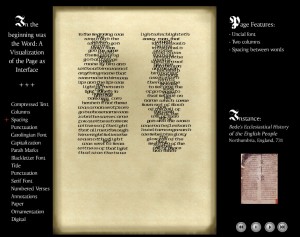
An animation that traces the historical page as interface. The animation was designed for the History of Reading Working Group as part of The Transliteracies Project. From the Introduction to the animation:
“We are guided by two suppositions: 1. The concept of the “interface,” developed within computer science to describe hardware or software that allows human-computer communication, can be fruitfully applied to understand those material forms — the page, the book, or the print — that have mediated so much human access to information in the long age of the codex. 2. Changes in the page interface have reflected and supported change in reading practices.”
The Agrippa Files
A non-funded research project to compile resources related to the scarcely-available multimedia artwork, Agrippa (a book of the dead) by William Gibson and Dennis Ashbaugh. As part of the editorial team I contributed to site development and designed multiple aspects of the site, in addition to performing general editorial work.
Animations and Images for The Agrippa Files
“Agrippa: Simulation of Dennis Ashbaugh’s Fading Ink Concept.”
“Artist Dennis Ashbaugh intended to print antique newspaper and photographic equipment catalog advertisements of technological artifacts (TV, phone, magic lantern, etc.) in “disappearing†ink over his copperplate aquatint etchings featuring DNA-gel motifs (not actual DNA stain patterns but aesthetic renderings). Exposing the pages to light or air were to have made these “overprints” gradually vanish, leaving behind just the underlying etchings. The art would thus have matched William Gibson’s disappearing poem, which disappears into encrypted code when played.
However, while some extant copies of the book contain overprints created in uncured photocopy toner as a gesture toward the original idea, technical problems prevented the implementation of the fading ink. The uncured-toner images blur over their base etchings and stain facing pages, but they remain.”
This animation simulates the original intended effect.
The Agrippa Files Animated Logo
Animated logo that scrolls through the DNA sequence included in the William Gibson / Dennis Ashbaugh artwork, Agrippa (a book of the dead).
“The Agrippa Files Animated Page Interface and Viewer”
High resolution images of the different types of pages found in the William Gibson / Dennis Ashbaugh artwork, Agrippa (a book of the dead). Images are captured from The Deluxe Edition and The Small Edition. The animated interface showcases a variety of images over a background drawn from other visuals from the art object.
The Agrippa Files Animated Page Interface and Page Viewer
